As finals week begins, an ongoing encampment of student protestors on Old Main’s lawn set a precedent for peaceful protesting amidst hostile responses to protests on campuses across the country. Administrators and student activists alike have compromised and communicated efficiently within negotiations, allowing for student’s freedom of expression to be upheld in the display of dissent, and for Hamline to avoid attracting controversy.
A six student occupation of the provost’s suite in Old Main — Hamline’s primary administrative building — preceding the final week of Spring classes escalated Palestinian advocacy at Hamline in solidarity with campus protests nationwide. After negotiating out of Old Main with a guarantee of amnesty and a meeting set with the president and Board of Trustees (BOT) chair, student activists began an encampment on Old Main’s lawn determined to stay rooted until the university makes significant steps toward meeting their demands.
Demands from Hamline Students for Justice (SFJ) primarily concern university investments. SFJ students have called for the university to disclose its investments and to divest or prevent future investment from “Israel, Israeli companies or companies mentioned by the Boycott, Divest, Sanctions (BDS) [movement] to be complicit in genocide,” SFJ wrote on Instagram.
After meeting with Chair of the Board of Trustees (BOT) Ellen Watters and Interim President Kathleen Murray on April 29, student demands were largely unsatisfied apart from a tentative projection that Hamline’s investments in Israeli companies sits at around 0.1%.
Students met with Board chair and president following the occupation
While students felt unsatisfied with the meeting’s outcomes, Professor of Philosophy Stephen Kellert who has been a faculty member of Hamline’s community for around 30 years says the student’s meeting with the BOT chair was unprecedented.
“Hamline does have a long history of having the Board of Trustees almost entirely insulated from faculty, students, and staff, so to have the chair of the Board talk with students, that’s a change,” Professor of Philosophy Stephen Kellert said. “Never seen anything like that.”

Students have continued protest actions since the meeting, with sit-ins outside of a University Leadership Team (ULT) meeting and outside of the faculty and staff end-of-year award ceremony. The university has not responded to students following Chair Watters’ and President Murray’s meeting with the students, and no forcible actions have been taken to remove student demonstrators or the encampment in front of Old Main. SFJ organizers have expressed that the encampment would stay until the university takes further action.
President Murray has stated no guarantees can be made for student demands without a decision from the BOT, but did guarantee the Board would be familiarized with student demands within two weeks following her meeting with SFJ organizers.
“[The encampment] will remain until we feel like our demands have been sufficiently addressed and sufficiently fulfilled,” junior June Gromis said. “If that means we wait for two weeks for that answer, and that is the only kind of progress there is in that direction, then that’s what it means.”
A student-centric approach
Gromis has been heavily involved with pro-Palestinian activism both on and off campus in recent months and was one of the overnight occupants in the provost’s suite.
After the occupation in Old Main began, Dean of Students Patti Klein-Kersten and Director of Public Safety Illiana Cantu Delgado quickly engaged with student demonstrators. In addition to Kersten identifying the student’s demands and primary concerns, both Kersten and Delgado emphasized to the students that the first priority throughout the occupation would be the student’s safety.
“We’re not here to police people,” Delgado said on April 26. “[The aim of HPS is to] support and observe and help. My gauge of security is holistic. I do not believe in policing people.”
That assurance rang true as it became clear the occupation would continue overnight on April 26, as Kersten and Interim Provost Andy Rundquist spent the night inside Old Main with the students. Student protestors were eventually permitted to leave and return to the building to get medical and health supplies and to receive deliveries of food and additional supplies, including a solar generator, from outside supporters.
Students and administrators engaged in face-to-face conversation and negotiation throughout the occupation. Administrators were either communicating updates from President Murray or engaging in constructive discourse about the goals of the occupation.
“I’ve always strived to be someone who works with students, not someone who is creating hurdles for students,” Kersten said in a later interview.
Conversely, universities across the country, including the University of Minnesota, have taken measures of force and increased police presence to deal with the student protests. At the time of publication, students have been arrested while protesting on their campuses at over 20 universities across the U.S.
Columbia University’s president ordered a police raid on April 18 and again on May 3 in response to an occupation of Hamilton Hall that resulted in over 100 arrests after students and activists began an encampment on Columbia’s campus and occupied the administrative office building. In solidarity with Columbia, universities like Harvard and Emory began student encampments of their own. The University of Minnesota arrested seven students, one faculty member and one non-university affiliated protestor according to Minnesota Daily reporting on April 23.
A community that walks the walk
With under 2,000 undergraduate students, Hamline is a small university that benefits from the intimate community building that comes with smaller populations. While personal relationships exist, Kersten believes that should not be a requirement for taking a student-centric approach.
“I would like to believe that me knowing students doesn’t change what my approach is,” Kersten said. “I happen to know many of [them], but the way I’ve tried to guide my work, that shouldn’t matter.”
The climate of protests at Hamline has not been unique solely through the actions of administrators. While universities taking punitive action against protests have seen far larger demonstrations, the size of Hamline’s student protests is not their only distinction. SFJ students have responded to criticisms from faculty and community members whose ideologies differ, taking steps to build community. The SFJ students leading Hamline demonstrations added language to their movement’s statement to clarify they are “not calling for the eradication of Israel or the expelling of Israeli Jews. We do not support any violence against civilians.” Given language or lack thereof from other student protests, many community members appreciated the amendments. Kellert spoke to SFJ students and expressed that appreciation.
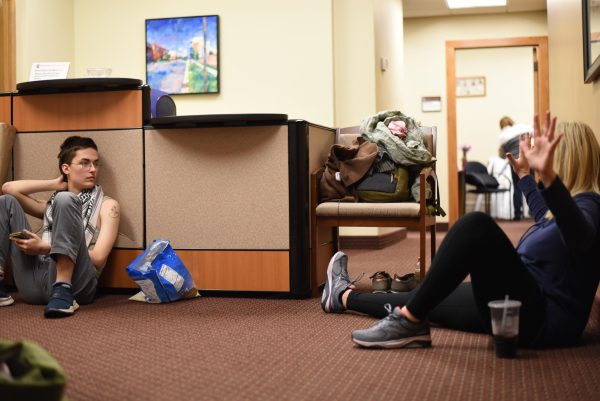
“I appreciated their amended statement, where they made it clear they are not calling for the elimination of the state of Israel and the expulsion of Jews from the region, because there are some student protests around the country who do want those things and have called for those things,” Kellert said. “And as a Jewish person, that’s very troubling to me.”
The amendments came as a response to a Letter to the Editor written by Associate Provost Irina Makarevitch and Hamline alumnus Patrick Hueller which expressed mutuality in “condemning the ungodly death toll in Gaza” but disappointment in the lack of acknowledgement or condemnation of Hamas or the attacks on Israeli civilians. Since the amendments to the SFJ statement, Makarevitch has continued to emphasize the importance of nuanced understanding.
“I appreciated the additions to the statement,” Makarevitch said. “Stating more than just one side of the story [is important] — and not doing it in people’s office spaces.”
& communicates with compassion
As Associate Provost, Makarevitch was actively working in her office inside the provost’s suite when the student occupation began. Upon the arrival of SFJ protestors, Makarevitch immediately expressed her discomfort and frustration to student protestors.
“This is private space,” Makarevitch said to protestors while they were actively occupying the provost’s suite on April 26. “It’s my office. You have no business to be here. None.”
While SFJ students maintain that disruptive forms of protest are key to making progress, organizers say that occupation of the provost’s office was not targeted at Makarevitch or any other administrator whose offices are located in the provost’s suite, nor is their movement intending to target Jewish community members.
“Jewish people are absolutely and currently marginalized in this country and in this community, and I have complete empathy with that,” Gromis said in regards to Hueller and Makarevitch’s Letter to the Editor. “I would never want any political action to jeopardize the safety of marginalized people, but we also have to recognize the fact that one side is being supported by our government, by the majority of the corporate autocracy in this country, by our university.”
While Makarevitch found the office occupation to be an unacceptable form of dissent, she clarified that she does believe in the students’ right to protest.
“I’m not against the protests. The encampment, even,” Makarevitch said. “The ultimate solution is not to get police to send people away. None of [that force] is going to help the actual problem […] it would be a lot better if all of us — all student protesters, all students on whatever sides — get together in a room and really tried to solve this.”
The SFJ encampment is visited daily by neighbors, faculty, staff and students, a majority of whom are offering support or donations of food and supplies. Students at the encampment have additionally encouraged community members to engage in respectful discourse with them, and are open to non-hostile disagreement. Kellert expressed pride in the student encampment after a conversation with some of the organizers for being open to a conversation that includes disagreements. Noting the difference in his perspective from the SFJ students, Kellert acknowledged the importance of having conversations with fundamental disagreements that are still respectful.
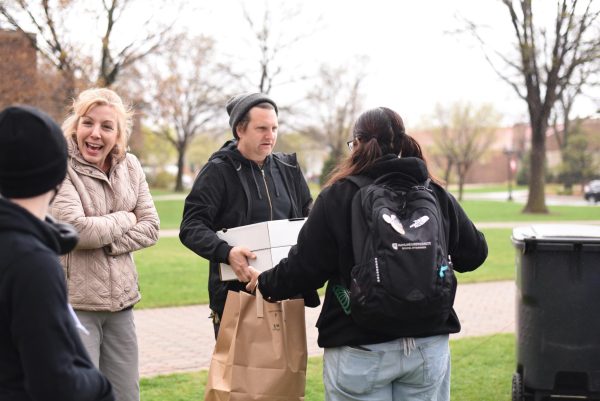
“I think one of the other ways that we can try to foster [compassion], is by encouraging people to consider that […] There can be well-intentioned, well-informed people who disagree with you about your most cherished beliefs, and it’s worth engaging with that disagreement to whatever extent you can respectfully and seriously,” Kellert said.
Creative writing professor Angela Pelster-Wiebe has been vocal in her support, and gratitude, for the student demonstrations, and shared similar sentiments about holding space for disagreement.
“It’s such a cliche, but of course we’re going to disagree,” Pelster-Wiebe said. “And those who are disagreeing aren’t disagreeing that we should be bombing children and civilians, they’re coming from a place of fear and trauma and having experienced their own erasure or violence. And how could I not respect that also? We have to learn to do this thing where we’re holding both things at once, and that is exactly what we’re supposed to be doing in a place of education.”
Pelster-Wiebe said that although the urgency of community education is important, the goal should be to produce solutions, not just identify points of contention.
“I’m not convinced anymore that just getting angry at the person you disagree with is gonna do the work that you want to do,” Pelster-Wiebe said. “I’m most interested in what is gonna get us to the place where [the atrocities] stop.”
Kellert expressed similar sentiments about the university’s responsibility to find solutions.
“The urgent matter in front of us as an institution is the ongoing actions in Gaza,” Kellert said.
“When war crimes are being committed, nuance is not the primary concern,” Kellert said. […] “It’s notoriously difficult to get a complicated, nuanced expression of multiple perspectives to fit on a sign that you can carry at a protest.”
Kellert said his conversations with protesters were still able to bore out that nuance.
“The current suffering of the Palestinian people, and Hamline’s neglect to fully live up to its social justice mission with regard to antisemitism are not equal in importance, but they are both there, and the ability to see two things at the same time is really hard,” Kellert said. “[The students] have been able to say ‘There is pain here, and there is pain here.’ The fact that one is urgent and massive, and the other is longstanding in a different way, and you don’t have to equate them to take them both seriously and treat them both humanely. You don’t have to claim that the sufferings are equal to have your heart broken by both.”
Hamline University silent as community urges action
Before the student occupation of Old Main, SFJ had held weekly events protesting, conversing or providing educational opportunities since March after their first official meeting gathered passionate students on Feb. 29. Additionally, Hamline Undergraduate Student Congress (HUSC) passed a resolution with a two-thirds vote calling for institutional disclosure and divestment, as well as a statement from President Murray condemning Israel’s targeted attacks against civilians. During the Old Main occupation, Dean of Students Patti Klein Kersten informed students that a presidential statement of that nature would be unlikely. President Murray confirmed that she would not be releasing that statement at her meeting with SFJ students, which she says was communicated to HUSC Presidents Abi Grace Mart and Travis Matthews following the resolution’s passing on March 4.

Hamline has not released a statement of any nature since Oct. 7 despite criticism from various members of Hamline’s community. Some community members hoped Hamline would release a statement within the days following Oct. 7 condemning Hamas’s attack on Israeli civilians. A statement SFJ students requested from the president alerting the community that she had met with SFJ was rejected unless the student encampment vacated Old Main’s lawn. Many community members now wait for a university statement addressing the chaos taking place in our community, or a simple acknowledgement.
“I think we have to have [a statement],” Associate Provost Makarevitch said. “Not on the conflict necessarily, but on the statement for our community. Like, wherever you’re at, just acknowledging that this is not a problem that Hamline University is going to solve.”
Universities cope with national scrutiny
Universities and their presidents across the U.S. have fallen under scrutiny for making politically-affiliated statements in regards to the crisis in Gaza. Chair and professor of religion Mark Berkson offered personal insight into how Hamline can take a stand without harming the institution or the various members of its community.
“In my opinion, the university can express the values of peaceful conflict resolution, pursuit of truth and justice, fairness and equity, and so on,” Berkson said in an email. “The university can express sympathy for the suffering of innocent people and express hope for the end of war… At the same time, it is important that this be done in a way that creates a space for all members of the university community to participate in vigorous, civil debates about important issues.”
In Oct. of 2022, Hamline became the subject of national debate in the higher education realm concerning academic freedom following the dismissal of an adjunct professor that showed an artistic depiction of the Prophet Muhammed in class.
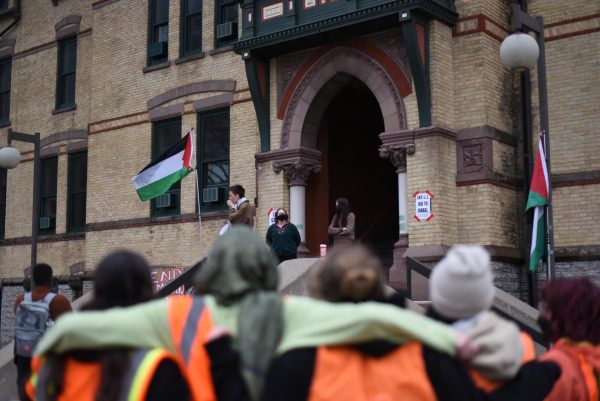
Associate Provost Makarevitch believes the scandal, and the following low incoming enrollment, has informed the university’s actions–or lack thereof–in taking action steps that may be interpreted as controversial.
“People are worried that whatever they say is going to backfire,” Makarevitch said. “I also understand that Hamline is vulnerable. I mean, we need to have students to come here. We are tuition driven.”
The first incoming class of new students following the controversy totaled 395 students, a significant decrease from the average enrollment of 466 in the years following the COVID-19 pandemic, which marked the last significant drop in new student enrollment. But such drops in enrollment can be the result of many factors, including changing regional and national demographics. As a private tuition-reliant university, Hamline has been in a budget deficit as a result of this decline.
Reckoning of morals in institutional investments
SFJ protest’s primary demands call for university divestment from any companies complicit in Israel’s occupation of Palestine. While in a meeting with SFJ organizers President Murray emphasized the lack of a guarantee that Hamline will take action towards divestment, she acknowledged that the precedent exists, including in two of the schools she has had administrative roles in — Macalester College and Whitman College — as provost and president emeritus respectively. Macalester and Whitman’s protocols were developed to divest from fossil fuels after fervent student protests. Each school’s divestment strategy relies on a committee to evaluate institutional investments under the ethical guidelines called for divestment, in which the committee can evaluate further divestment strategy as conflicts of moral standings arise.

While Berkson sees the benefits of institutional neutrality, personally he also believes in ethical assessments of investments.
“I personally believe that a university should be guided by principles of ethical investing (not just where it regards the Middle East, but everywhere),” Berkson said in an email. “I deeply appreciate students who speak out in order to remind the university of its highest values and call for it to abide by them.”
Angela Pelster-Wiebe also expressed gratitude for students attempting to hold the institution financially responsible to a moral code.
“Thank you students, for reminding us that it costs something to do the right thing,” Pelster-Wiebe said.




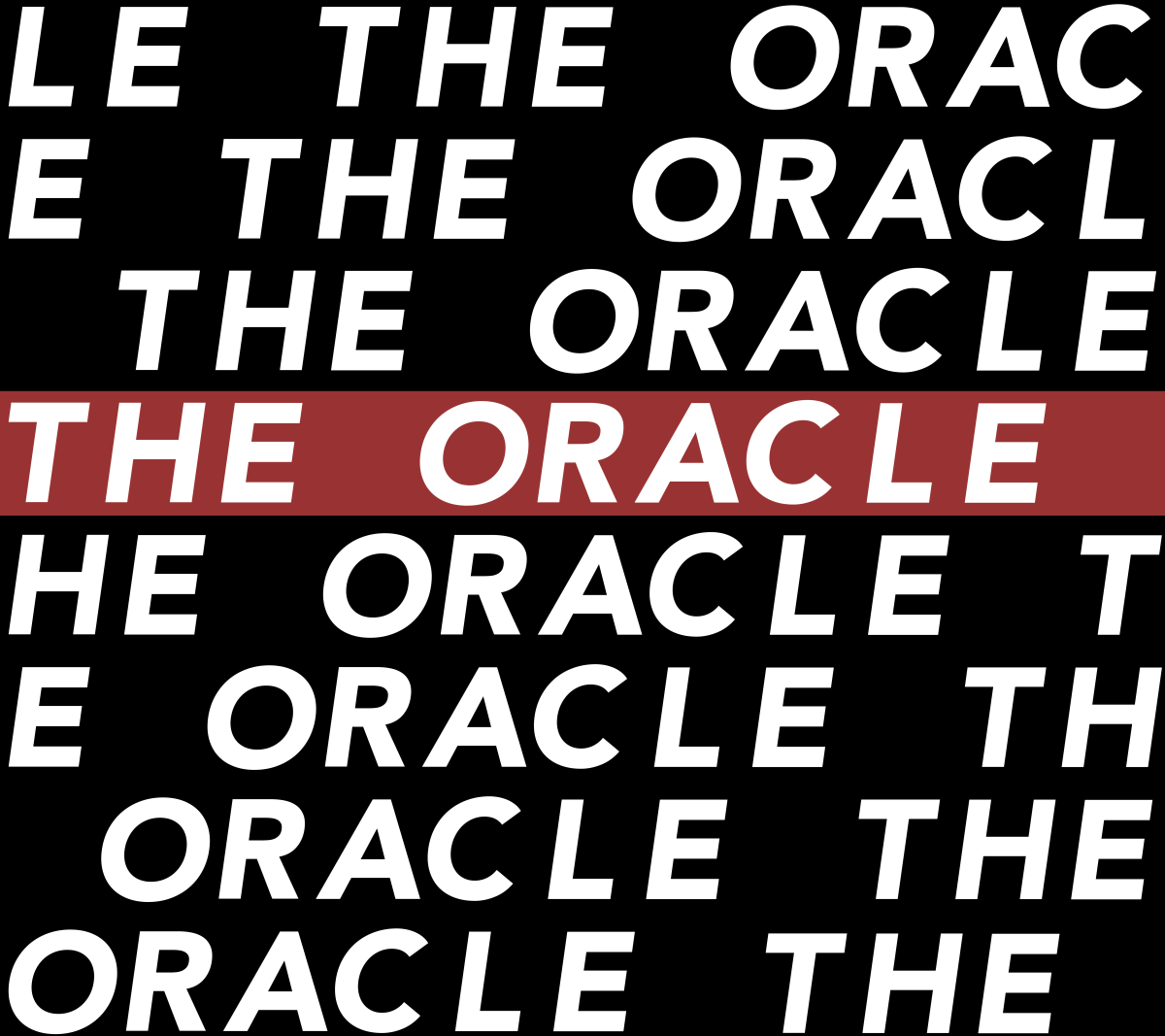
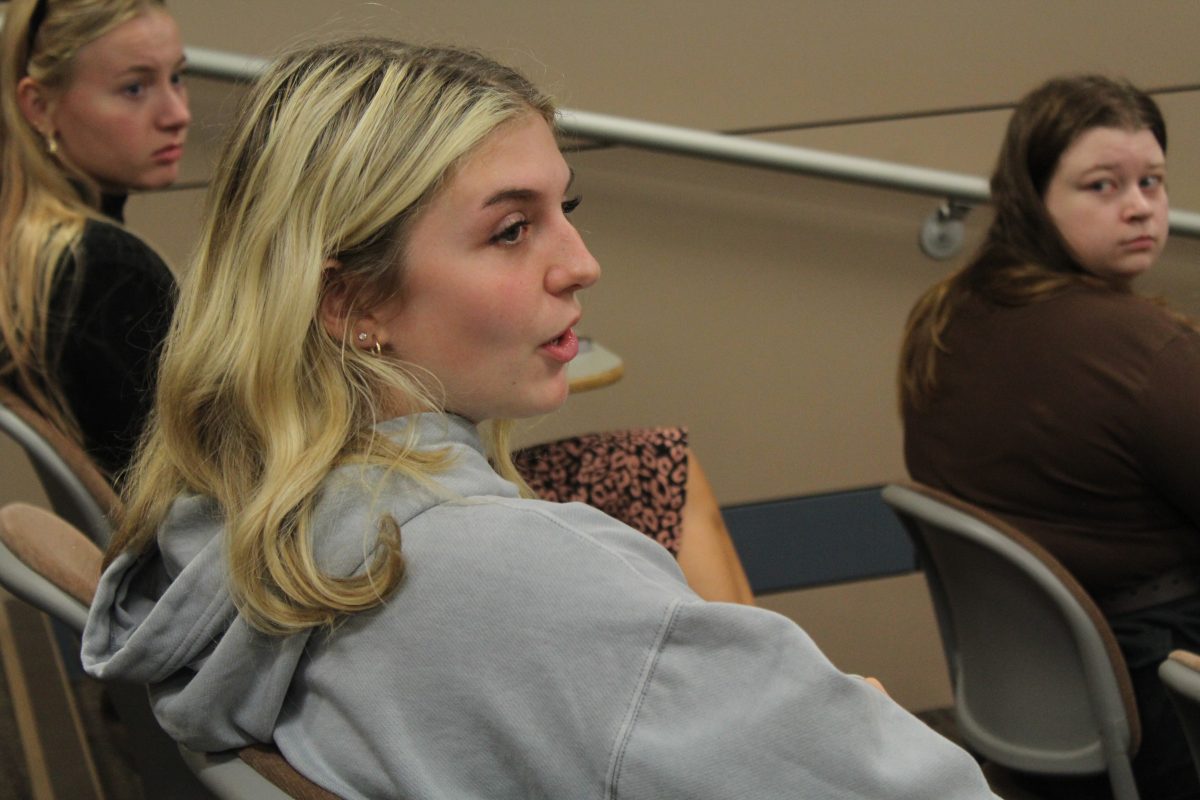
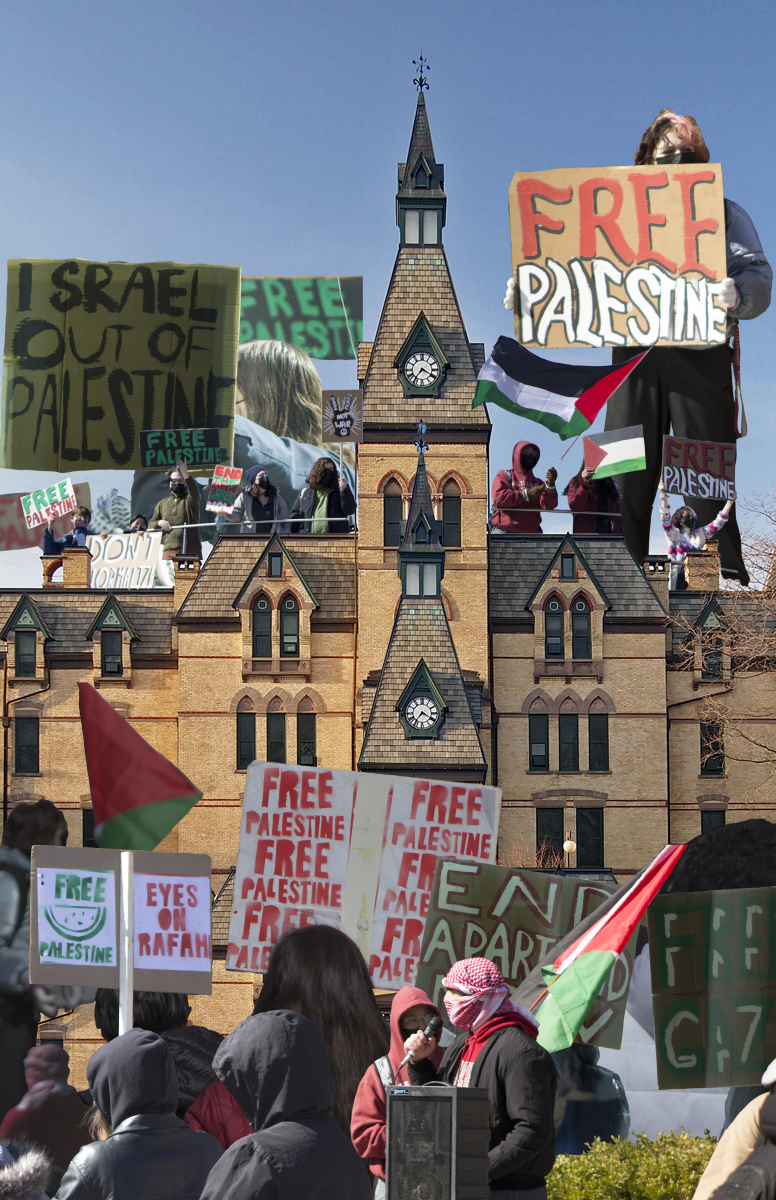
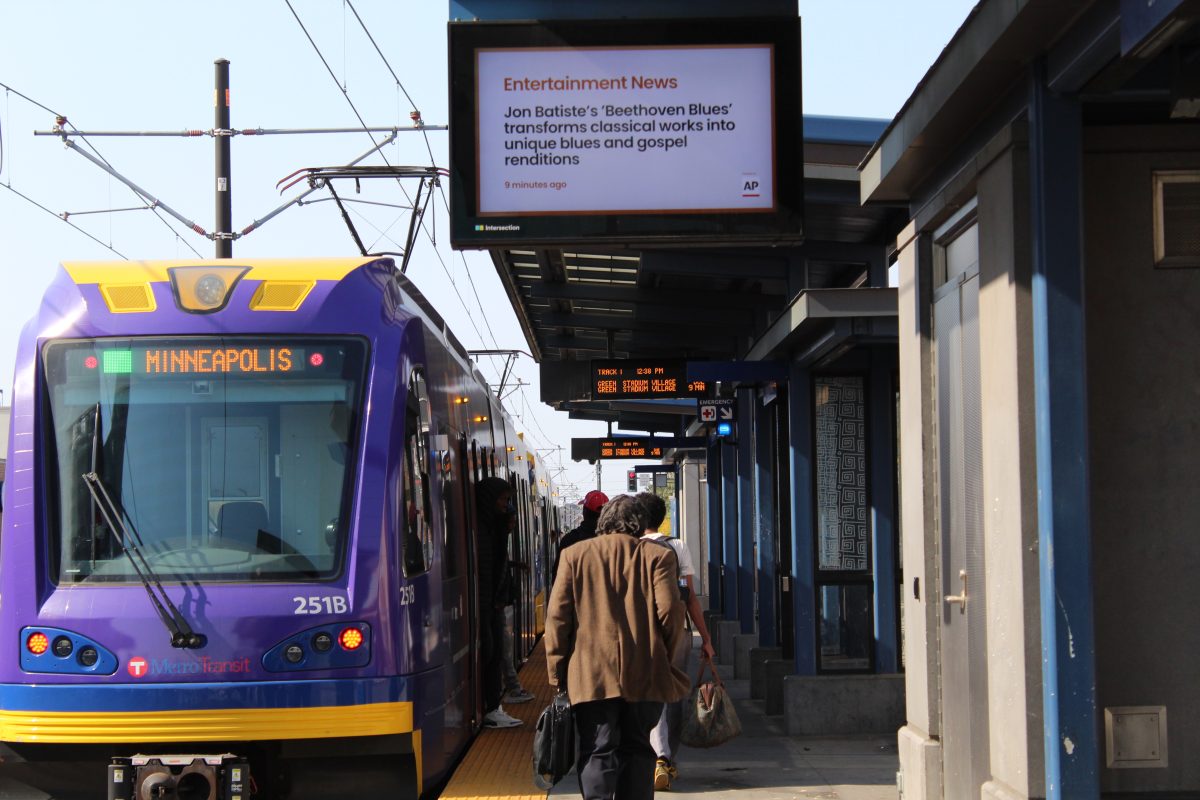
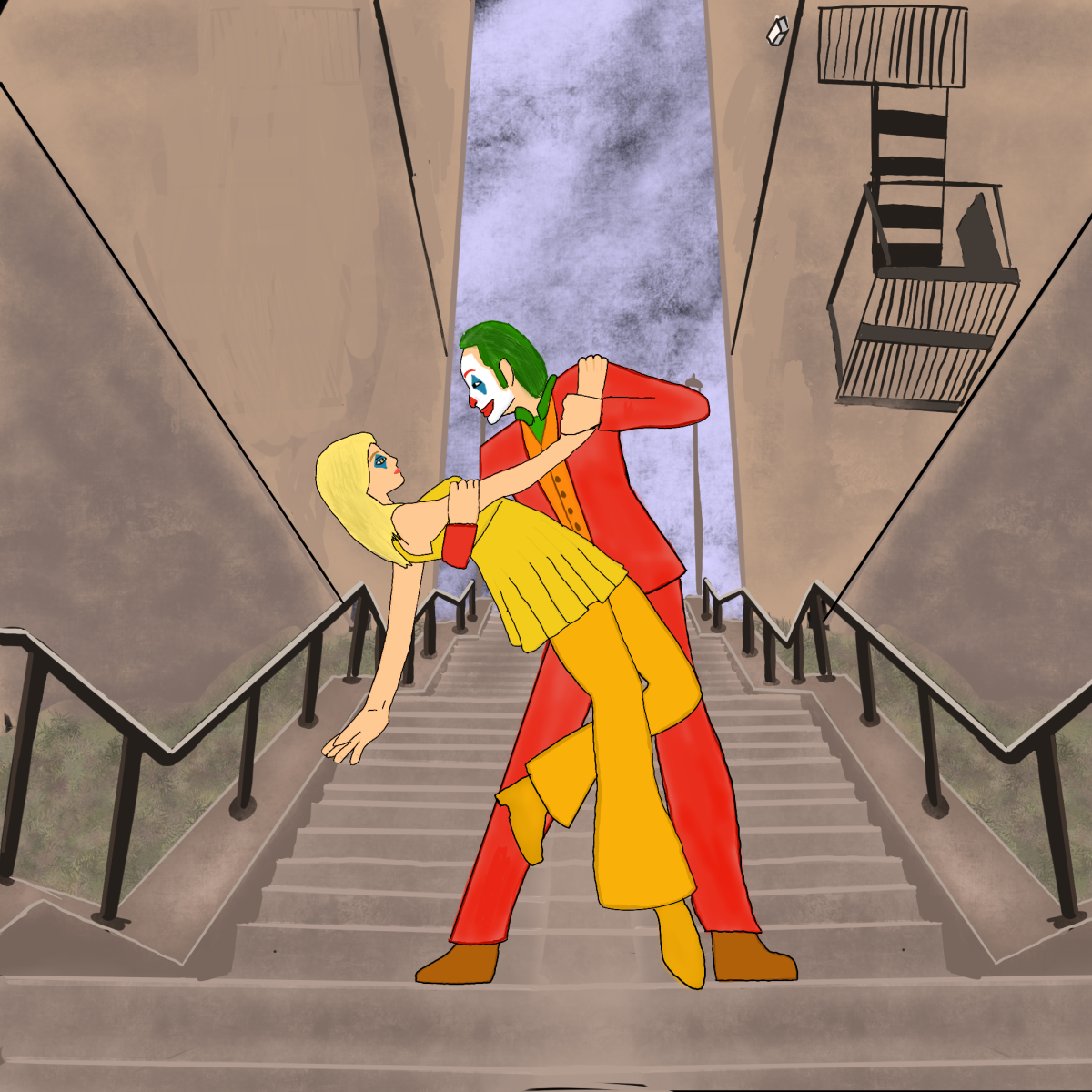




Aida Audeh • May 12, 2024 at 1:43 pm
The numbers speak for themselves.
Gaza
*As of today, Mother’s Day, Israel has killed 35,034 people in Gaza, including more than 14,500 children. As of today, Mother’s Day, Israel has injured more than 78,755 people in Gaza. As of today, Mother’s Day, Israel has caused more than 10,000 people to be missing and unaccounted for in Gaza.
*As of today, Mother’s Day, Israel has destroyed or damaged more than half of all homes in Gaza, 80% of commercial buildings, and 73% of school buildings.
*As of today, Mother’s Day, Israel has destroyed or damaged hospitals in Gaza to the extent that only 12 out of 35 hospitals are just partially functioning.
*As of today, Mother’s Day, Israel has destroyed or damaged to the point of being non-operational 83% of groundwater wells in Gaza.
*As of today, Mother’s Day, Israel has destroyed or damaged 267 places of worship in Gaza, including one of the oldest Christian churches in the world.
West Bank
*As of today, Mother’s Day, Israel has killed over 500 people, including at least 81 children, in the West Bank and injured more than 4,382.
*As of today, Mother’s Day, Israel has destroyed or damaged over 1,500 structures in the West Bank, 20% of which were/are in East Jerusalem.
Journalists
*As of today, Mother’s Day, Israel has killed approximately 100 journalists.
Humanitarian Aid Workers
*As of today, Mother’s Day, Israel has killed more than 200 humanitarian aid workers in Gaza.
In Perspective
*Gaza is 25 miles long and about 3.7 to 7.5 miles wide, has a total area of 141 square miles, and is home to more than 2 million people making it one of the most densely populated areas on earth.
*The West Bank has a total area of 2,180 square miles and is home to more than 2,700,000 people. Additionally, illegal Israeli settlers in the West Bank number about 670,000 (220,000 of whom are in East Jerusalem).
*Israel has received over $300 billion from the US, cumulatively, since 1946. Israel receives approximately $3.3 billion annually from the US, most of which is used to purchase arms, equipment, and military services from the US.
– The Oracle does not allow links to internet sources in comments. I am happy to provide these links upon request. Sources include the Council on Foreign Relations, the United Nations, Amnesty International, and Wikipedia, among others.